
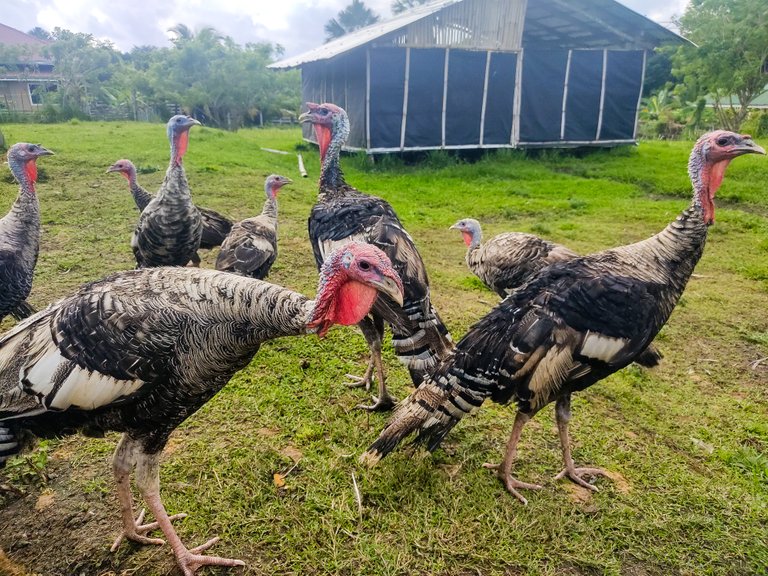
Broad Breasted Bronze Turkeys (Pavos de bronce de pecho ancho)

Cría de Pavos (Pabo / Pavo) por Backyard Farming
How Turkeys Started in the Philippines
Turkeys, in the Philippines, are called "pabo".
According to the articles I found in the internet, turkeys were brought here during the Spanish colonization during the mid-16th century. These native turkeys were originally called "pavo", hence the Filipino-derived name "pabo".
The turkey market didn't really flourish in the next hundred years until the Americans came and introduced a new breed, the Broad Breasted Bronze Turkey. Their legs are shorter, but their bodies broader. And they can weigh up to 10 kilograms in 8 to 12 months. And this is what we are currently breeding in our homestead.
The Beltsville Small White Turkey was then introduced recently by the Philippine government. They are a smaller breed bearing white feathers all over. Even though they are smaller, they are more resistant to disease, lays more eggs, and are much easier to breed.

Broad Breasted Bronze Turkeys (Pavos de bronce de pecho ancho)
Cómo comenzaron los pavos en Filipinas
Los pavos, en Filipinas, se llaman "pabo".
Según los artículos que encontré en Internet, los pavos fueron traídos aquí durante la colonización española a mediados del siglo XVI. Estos pavos nativos se llamaban originalmente "pavo", de ahí el nombre derivado de filipino "pabo".
El mercado del pavo realmente no floreció en los siguientes cien años hasta que llegaron los estadounidenses e introdujeron una nueva raza, el pavo de bronce de pecho ancho. Sus piernas son más cortas, pero sus cuerpos más anchos. Y pueden pesar hasta 10 kilogramos en 8 a 12 meses. Y esto es lo que estamos criando actualmente en nuestra granja.
El pequeño pavo blanco de Beltsville fue presentado recientemente por el gobierno filipino. Son una raza más pequeña con plumas blancas por todas partes. Aunque son más pequeños, son más resistentes a las enfermedades, ponen más huevos y son mucho más fáciles de criar.
Turkey Consumption in the Philippines
Chicken meat is actually the most common poultry product consumed by Filipinos. Almost all restaurants and fast-food chains here offer a chicken meal. Ducks and geese are next on the list. While it's extremely rare to find a place that offers a turkey dish on its menu.
However, due to the rising popularity of the western culture in the Philippines, turkey meat has also started being noticed. Because of the Thanksgiving celebration, modern Filipino families also try to enjoy this day by preparing and eating roasted turkeys.
Personally, I would only prepare a turkey dish when I would celebrate something, like a family member's birthday, a homecoming, etc. We really don't have a lot of them so we cannot afford them for daily consumption. But I really like its taste and texture, especially when cooked as the main ingredient for "Adobo sa Gata", and "Caldereta."
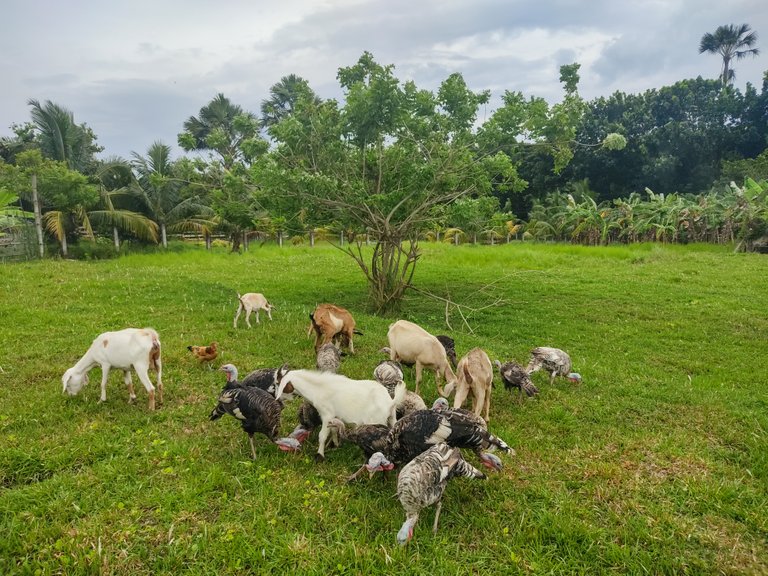
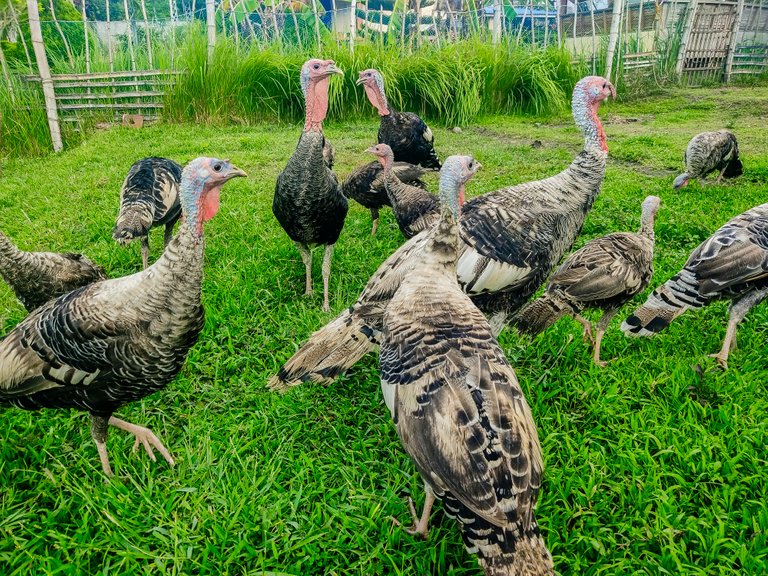
Consumo de Turquía en Filipinas
La carne de pollo es en realidad el producto avícola más común que consumen los filipinos. Casi todos los restaurantes y cadenas de comida rápida aquí ofrecen comida con pollo. Los patos y los gansos son los siguientes en la lista. Si bien es extremadamente raro encontrar un lugar que ofrezca un plato de pavo en su menú.
Sin embargo, debido a la creciente popularidad de la cultura occidental en Filipinas, la carne de pavo también ha comenzado a ser notada. Debido a la celebración del Día de Acción de Gracias, las familias filipinas modernas también tratan de disfrutar este día preparando y comiendo pavos asados.
Personalmente, solo prepararía un plato de pavo cuando celebraría algo, como el cumpleaños de un miembro de la familia, un regreso a casa, etc. Realmente no tenemos muchos, por lo que no podemos pagarlos para el consumo diario. Pero me gusta mucho su sabor y textura, sobre todo cuando se cocina como ingrediente principal del "Adobo sa Gata" y la "Caldereta".
How I Started
A relative of mine gave me two pairs of these Broad Breasted Bronze turkeys a year and a half ago. It was actually unplanned so I'm not sure where to place them. I just settled them inside our fenced pasture together with our goats. I also moved our empty dog house for them as makeshift shelter and nest.
I also added a quick-build roosting area made up of bamboo just for perching. Unfortunately, these are out in the open without shade. And they just use it for sleeping.

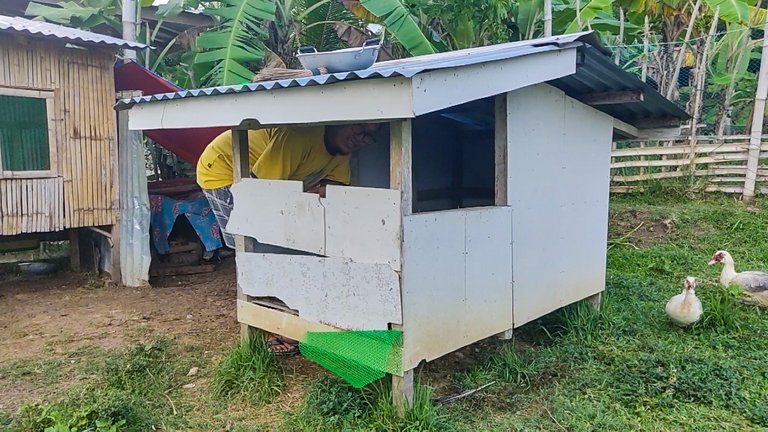
This is previously a dog house which we converted into a nesting area. (Anteriormente, esta era una casa para perros que convertimos en un área de anidación.)
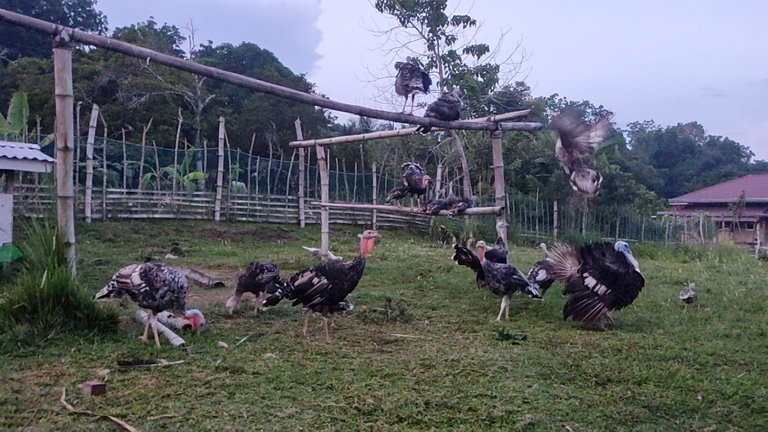
Roosting area (Zona de descanso)
Cómo empecé
Un pariente mío me regaló dos pares de estos pavos Broad Breasted Bronze hace un año y medio. En realidad, no fue planeado, así que no estoy seguro de dónde colocarlos. Simplemente los instalé dentro de nuestro pasto cercado junto con nuestras cabras. También moví nuestra casa de perro vacía para ellos como refugio y nido improvisado.
También agregué un área de descanso de construcción rápida hecha de bambú solo para posarse. Desafortunadamente, estos están al aire libre sin sombra. Y solo lo usan para dormir.
Turkey Feeding

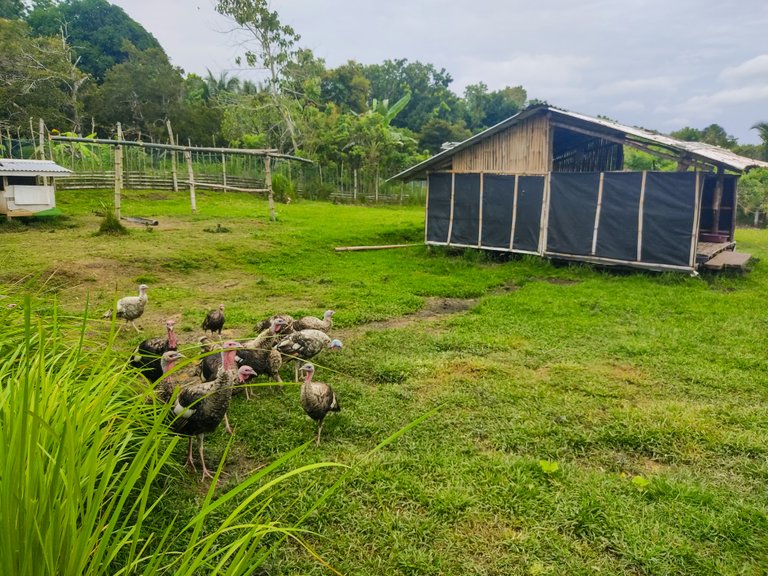

I like my turkeys as free-range animals. They would generally graze and find food in the pasture all day. The larger the pasture area, the better. However, the pasture itself cannot provide all the nutrition they need, especially if they are numerous, and if you want them to continuously lay eggs.

Commercial feeds in the dipper, and ground rice hulls in the bucket. (Alimentos comerciales en el balde y cascarilla de arroz molido en el balde.)

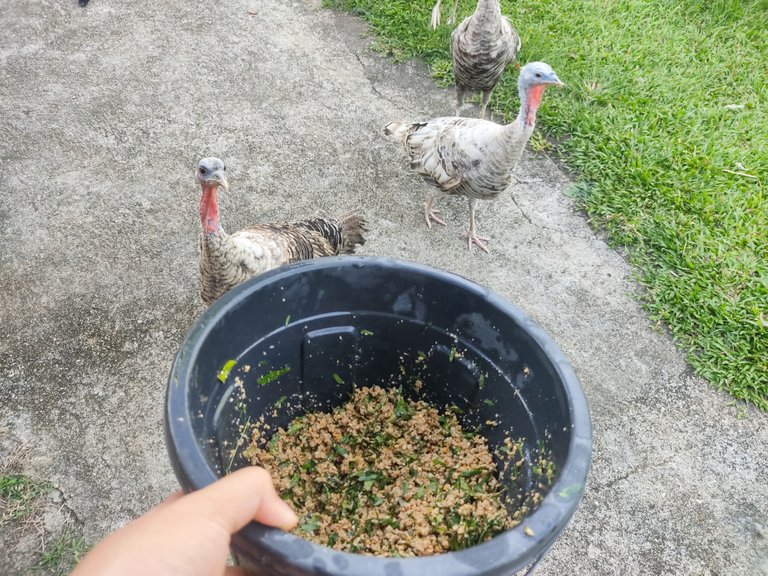
Mixture of ground rice hulls and organic food. (Mezcla de cáscaras de arroz molidas y alimentos orgánicos.)
Currently, my turkeys have increased to a dozen, so we need to feed them twice a day. The feeds we give them consist mainly of 65% ground rice hulls, 20% commercial feeds, and 15% natural-grown organic foods such as Madre de Agua leaves, Malunggay leaves, Jerusalem leaves, grains, chopped fruits and vegetables. Sometimes, if we have plenty of organic food, we replace the commercial feeds with it.

Madre de Agua leaves (Hojas de madre de agua)
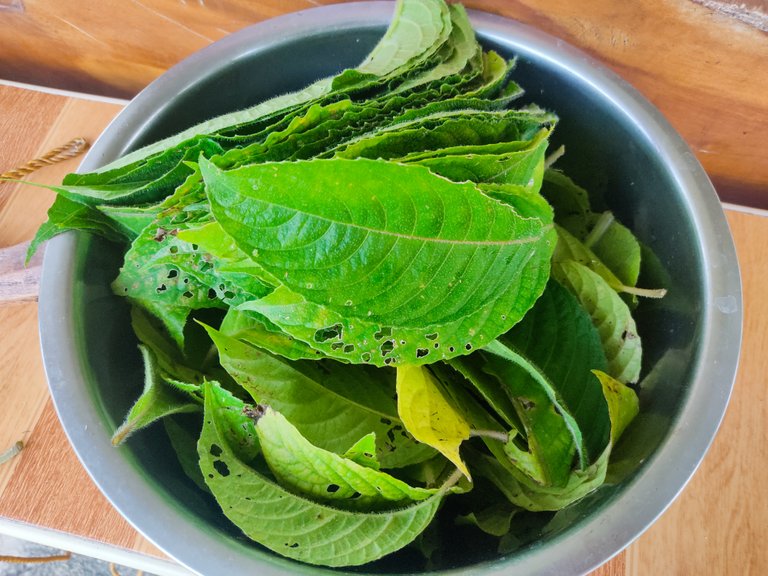
Madre de Agua leaves (Hojas de madre de agua)

Shredded Madre de Agua leaves (Hojas de Madre de Agua trituradas)
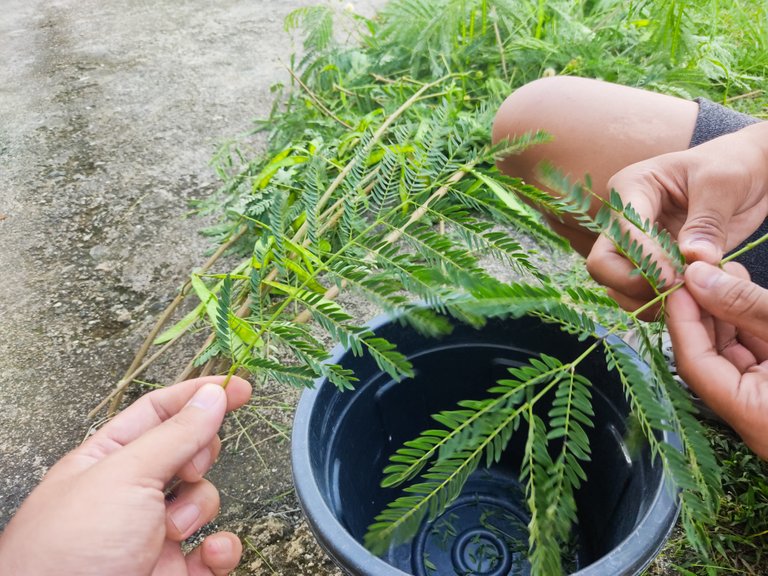
Jerusalem leaves (Hojas de Jerusalem)

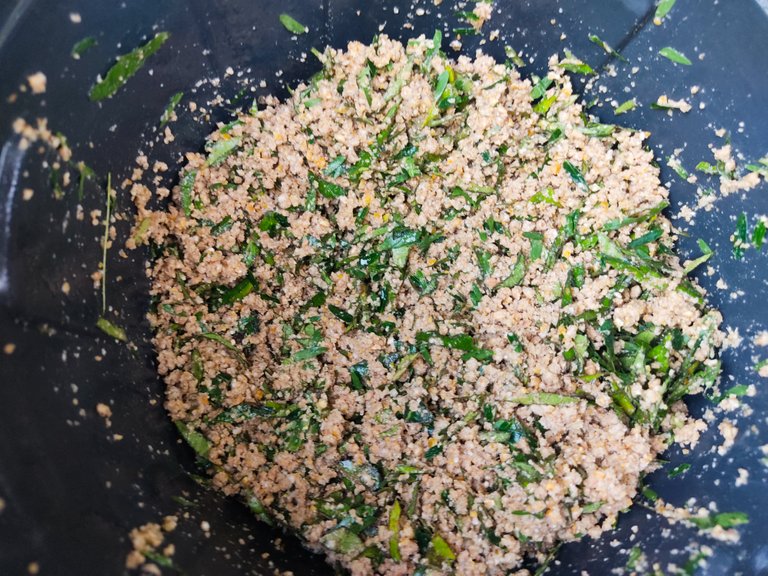
Mixture of ground rice hulls and organic food. (Mezcla de cáscaras de arroz molidas y alimentos orgánicos.)
And as soon as my Madre de Agua plants have grown and are fully-matured, I will be able to remove commercial feeds from their consumption. We can go fully organic! It should make them healthier, and their meat will also be tastier and healthier for human consumption.
Alimentación de pavos
Me gustan mis pavos como animales de corral. Generalmente pastaban y encontraban comida en los pastos todo el día. Cuanto mayor sea el área de pasto, mejor. Sin embargo, el pasto por sí solo no puede proporcionar toda la nutrición que necesitan, especialmente si son numerosos y si quieres que pongan huevos continuamente.
Actualmente, mis pavos han aumentado a una docena, por lo que debemos alimentarlos dos veces al día. Los alimentos que les damos consisten principalmente en un 65 % de cascarilla de arroz molido, un 20 % de alimentos comerciales y un 15 % de alimentos orgánicos de cultivo natural, como hojas de Madre de Agua, hojas de Malunggay, hojas de jerusalén, granos, frutas y verduras picadas. A veces, si tenemos mucha comida orgánica, reemplazamos los alimentos comerciales con ella.
Y tan pronto como mis plantas de Madre de Agua hayan crecido y estén completamente maduras, podré retirar los alimentos comerciales de su consumo. ¡Podemos ir completamente orgánicos! Debería hacerlos más saludables, y su carne también será más sabrosa y saludable para el consumo humano.
Turkey Breeding
The Philippines only has two seasons, which are the dry and wet (or rainy) seasons. Upon observation, our turkeys would lay more eggs during the dry season.
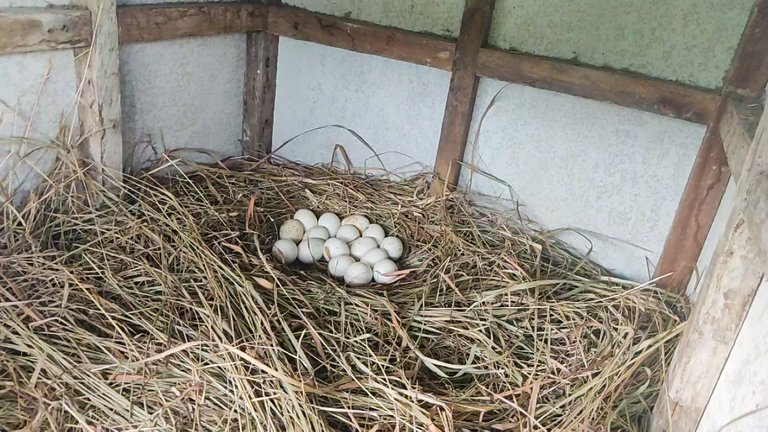
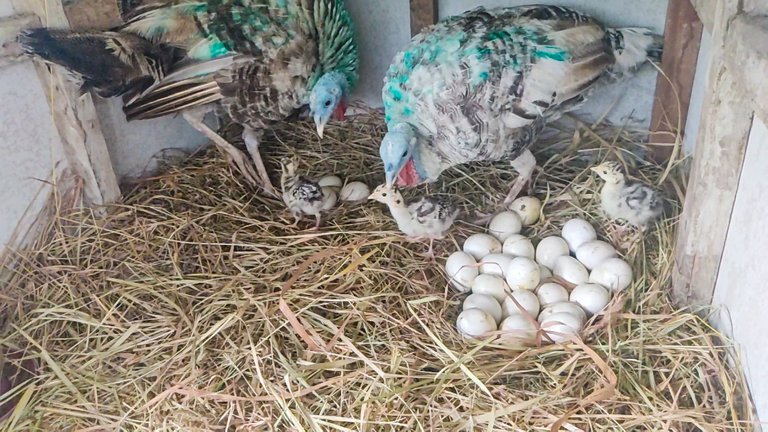
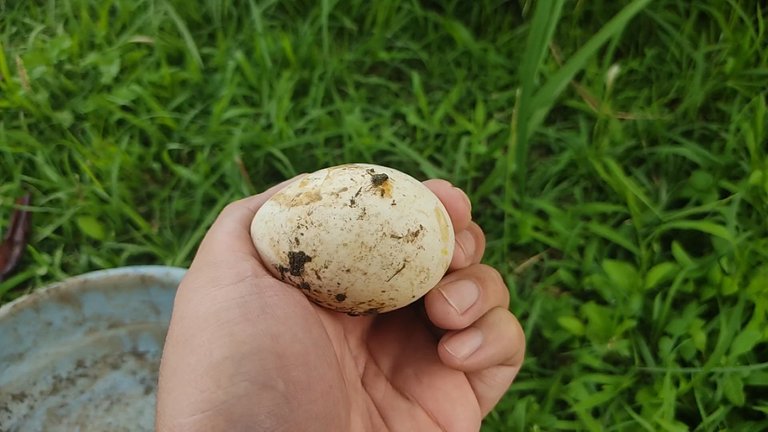
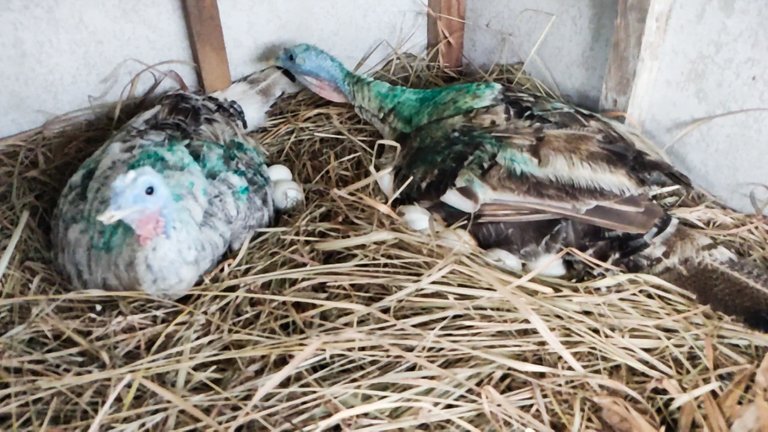
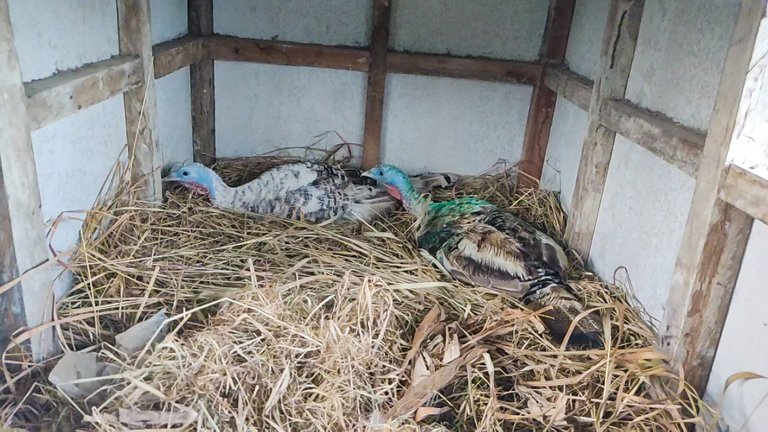
And you'll be surprised at how many eggs a healthy female turkey can produce on single breeding. It can lay approximately 15-30 eggs! They are bigger and sturdier than chicken eggs. Unfortunately, from my experience, not all of them will hatch without an artificial incubator.




In addition, turkeys like to lay eggs in areas hidden with tall grass or covered spots not frequented by people or other animals. So, even though you have nest boxes for them, you will see them lay eggs to unusual areas. You'll have to relocate them to a safe and dry nesting box. And it's best to do it at night so the mother hen won't run off.
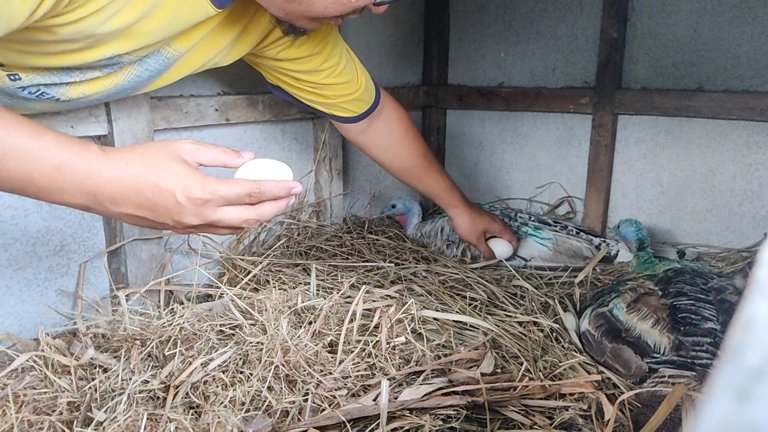
And sometimes, if I don't know who the egg's mother is, I just place the eggs to any turkey nest, usually the one who has less.
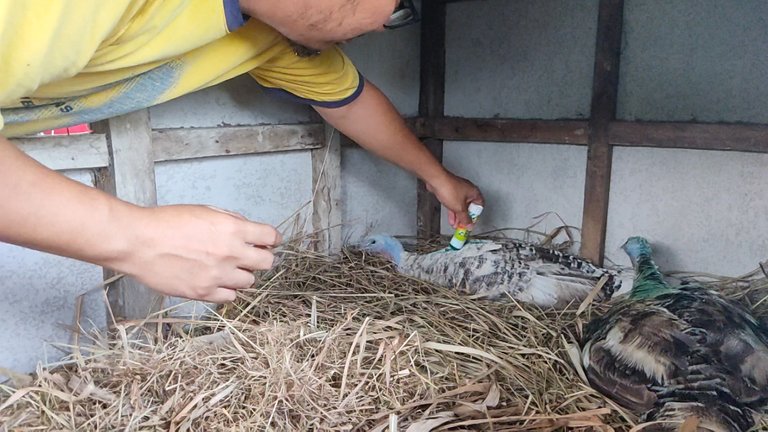
And to easily monitor which turkeys are brooding, I would color their feathers.
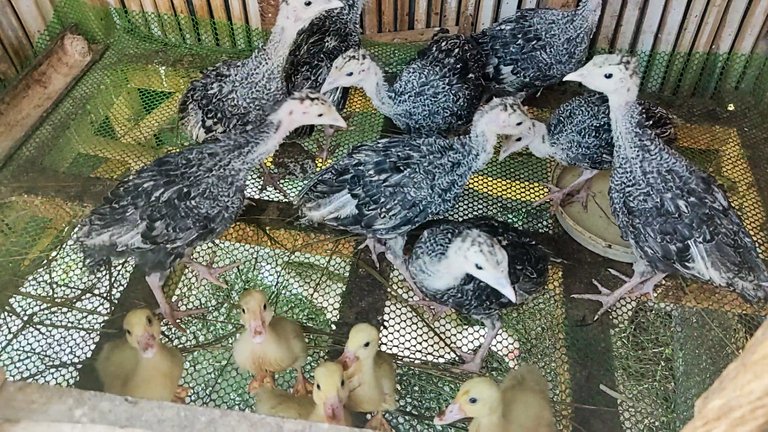
It is not advisable to mix other hatchlings, however the ducklings currently have nowhere to live, so here they are. (No es aconsejable mezclar otras crías, sin embargo, los patitos actualmente no tienen dónde vivir, así que aquí están.)
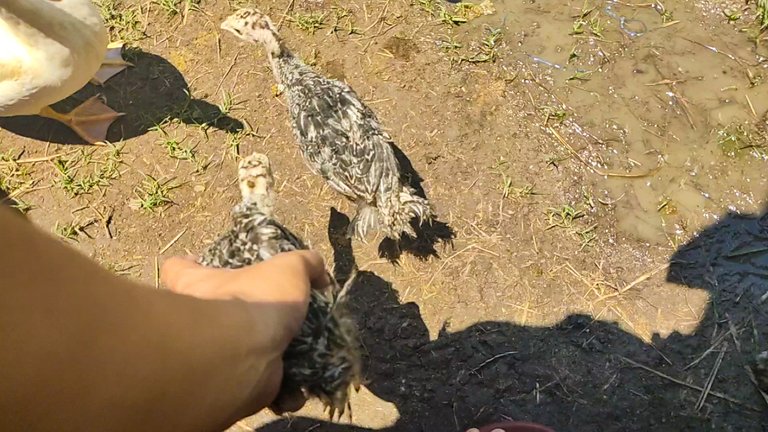
Then I had to build a coop installed with a heat lamp for the turkey chicks and poults. These young turkeys have different food consumption and nutritional needs than the adults. They should eat more nutritious meals and usually supplemented with vitamins and minerals to ensure their healthy growth.
Cría de pavos
Filipinas solo tiene dos estaciones, que son las estaciones seca y húmeda (o lluviosa). Tras la observación, nuestros pavos pondrían más huevos durante la estación seca.
Y se sorprenderá de cuántos huevos puede producir una pava sana en una sola cría. ¡Puede poner aproximadamente 15-30 huevos! Son más grandes y resistentes que los huevos de gallina. Desafortunadamente, según mi experiencia, no todos saldrán del cascarón sin una incubadora artificial.
Además, a los pavos les gusta poner huevos en áreas ocultas con pasto alto o lugares cubiertos que no son frecuentados por personas u otros animales. Entonces, aunque tenga cajas nido para ellos, los verá poner huevos en áreas inusuales. Tendrás que reubicarlos en una caja de anidación segura y seca. Y es mejor hacerlo de noche para que la mamá gallina no se escape.
Y a veces, si no sé quién es la madre del huevo, simplemente coloco los huevos en cualquier nido de pavo, generalmente el que tiene menos.
Y para controlar fácilmente qué pavos están incubando, colorearía sus plumas.
Luego tuve que construir un gallinero instalado con una lámpara de calor para los pollitos y pavipollos de pavo. Estos pavos jóvenes tienen un consumo de alimentos y necesidades nutricionales diferentes a los adultos. Deben comer comidas más nutritivas y, por lo general, suplementadas con vitaminas y minerales para asegurar su crecimiento saludable.
Future of Turkeys in the Philippines
Currently, the sudden increase in cost of commercial animal feeds also resulted in the higher market price of chicken eggs and meat.
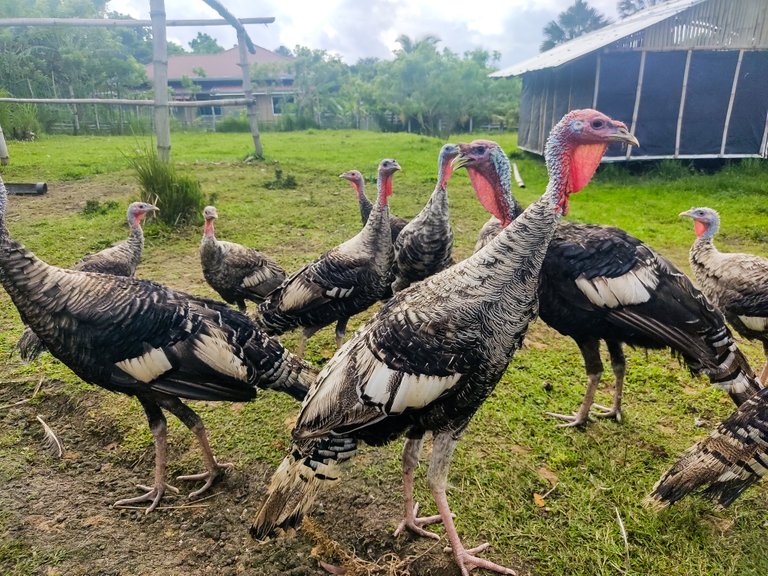
Due to this, I think, turkey meat, eggs, and its byproducts will be recognized more. Because not only the cost of breeding them through backyard farming is very low. But they are also easy to breed and farm. They are also more resistant to diseases. And their droppings don't have a nasty smell, unlike chickens and ducks.
El futuro de los pavos en Filipinas
Actualmente, el aumento repentino en el costo de los alimentos comerciales para animales también resultó en el aumento del precio de mercado de los huevos y la carne de pollo.
Debido a esto, creo que la carne de pavo, los huevos y sus derivados serán más reconocidos. Porque no solo el costo de criarlos a través de la agricultura de traspatio es muy bajo. Pero también son fáciles de criar y cultivar. También son más resistentes a las enfermedades. Y sus excrementos no tienen un olor desagradable, a diferencia de los pollos y los patos.
My Next Project
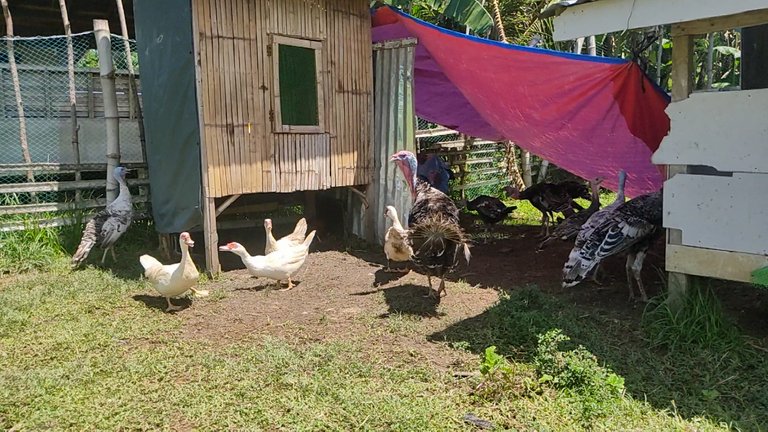
Shelter area (Área de refugio)
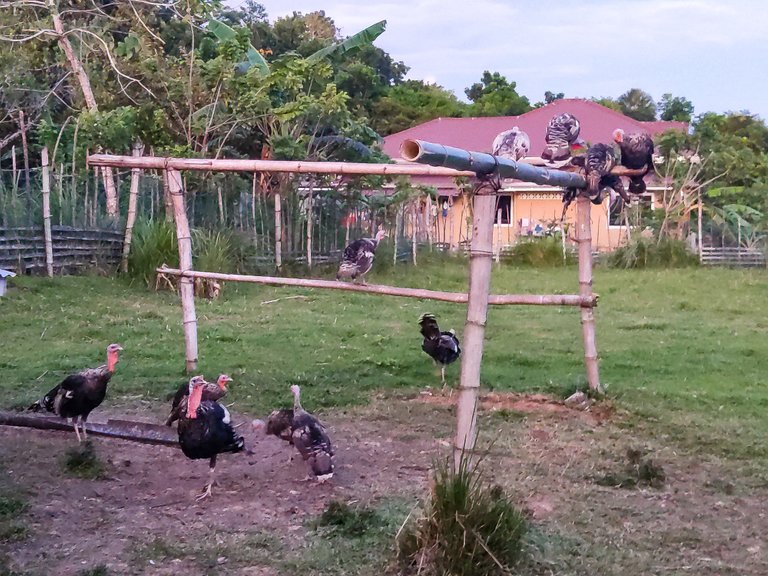
Roosting area (Zona de descanso)
I need to improve the quality of life for my turkeys, especially their shelter. So I'm planning to rebuild their roosting areas with proper roofing to protect them from exposure to elements. I will also build better nesting boxes soon.
Mi próximo proyecto
Necesito mejorar la calidad de vida de mis pavos, especialmente su refugio. Así que planeo reconstruir sus áreas de descanso con un techo adecuado para protegerlos de la exposición a los elementos. También construiré mejores nidales pronto.
BONUS PHOTO

LOL! I just can't help but share this funny photo of my duck sharing her nest with a hen. This is the first time I've seen this happen. These are duck eggs, and I'm not sure if the duck is terrified or just avoiding a fight with the hen to prevent her eggs from getting smashed.
I hope they are friends, and love each other. LOL!
FOTO ADICIONAL
¡JAJAJA! No puedo evitar compartir esta divertida foto de mi pato compartiendo su nido con una gallina. Esta es la primera vez que he visto que esto suceda. Estos son huevos de pato, y no estoy seguro si el pato está aterrorizado o simplemente evita una pelea con la gallina para evitar que sus huevos se rompan.
Espero que sean amigos y se amen. ¡JAJAJA!
Spanish translations were made possible using Google Translate.

You can call me, Jay.
I'm a web developer, adrift in the art of farming,
blog writing and photography.
Thank you for reading!


The rewards earned on this comment will go directly to the people( @anonymous02 ) sharing the post on Twitter as long as they are registered with @poshtoken. Sign up at https://hiveposh.com.
Woah I learned a lot from this blog haha. It sounds like a good business if there's a lot of consumers of turkey's meat in the Philippines.
15-30 eggs is a lot!
!PIZZA
Hey, you're actually right. Since there's not much market here for turkeys, the large-scale farmers would export them to other countries.
And about the eggs, they really lay a lot. Not all of them will hatch so we tend to cook a few eggs. And they really have large eggs.
Thanks for appreciating my blog.
This is currently the blog where I put more than 100% of my effort and creativity. It's quite difficult for me to compose since I'm not native to the english and spanish language.
So yeah, thanks!
!PIZZA
!LUV
(1/1) gave you LUV. tools | wallet | discord | community | <>< daily
tools | wallet | discord | community | <>< daily
HiveBuzz.me NFT for Peace
So are you getting profit from it?
Oh may I ask why are you putting spanish language?
Seems, lot of readers here are also spanish, so I inserted spanish translations. Maybe it's not needed?
Regarding my turkeys, I currently do not sell them. A dozen of them isn't a lot so we use them for celebrations in our family. It tastes good with great recipes, so we won't need to buy expensive meat in the market.
And also, there isn't much market for them here so we can't sell them at their valued price. So we instead use them for family consumption.
Hmm okay.
Oh yeah turkey isn't that popular in the Philippines I guess? People are not that open with it.
In other countries maybe they are overvalued haha
Is it popular in your country? Which country do you live? How much is it in your marketplace?
Haha sorry so many questions, I just got curious with the turkey cost in your country.
Do you all love turkey meat and its recipes?
Hahahaha lol I live in the Philippines
Thank you for sharing this amazing post on HIVE!
Your content got selected by our fellow curator tibfox & you just received a little thank you upvote from our non-profit curation initiative!
You will be featured in one of our recurring curation compilations which is aiming to offer you a stage to widen your audience within the DIY scene of Hive.
Make sure to always post / cross-post your creations within the DIYHub community on HIVE so we never miss your content. We also have a discord server where you can connect with us and other DIYers. If you want to support our goal to motivate other DIY/art/music/gardening/... creators just delegate to us and earn 100% of your curation rewards!
Stay creative & hive on!
PIZZA Holders sent $PIZZA tips in this post's comments:
jhepong tipped anonymous02 (x1)
(1/5) @anonymous02 tipped @jhepong (x2)
Learn more at https://hive.pizza.
Yay! 🤗
Your content has been boosted with Ecency Points
Use Ecency daily to boost your growth on platform!
Support Ecency
Vote for new Proposal
Delegate HP and earn more, by @jhepong.